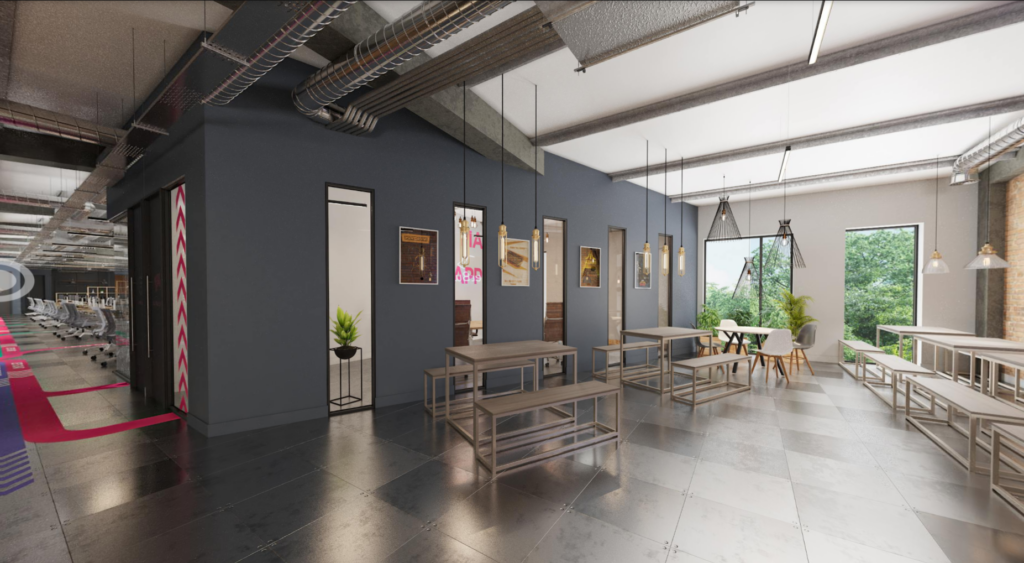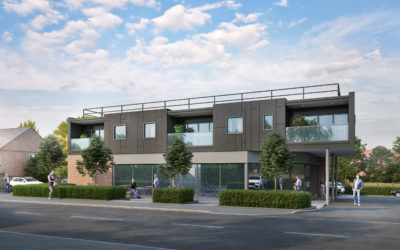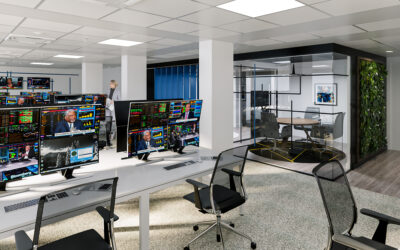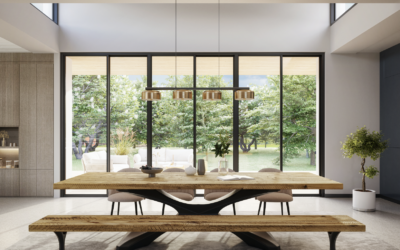Unlock The Secrets Of Property Virtual Tours With 3D Models

Over 63% of home buyers in 2020 bought a property without seeing it in person.
Technological advancements have revolutionised selling properties. Since the COVID pandemic, virtual tours have kept the real estate market going, and have helped thousands of individuals buy a new house without actually visiting the property.
Despite being an alternative for corporations, virtual property tours have been proven effective in meeting the dynamic requirements of home buyers. To keep up with house viewings in real time, real estate agents often use interactive 3D models to seal the deal.
It is helpful for pre-sale efforts and a game changer in helping buyers make decisions. Due to the simplicity and customisable content of 3D models, it has become an essential tool in property buying decisions.
This article will review three different types of 3D models and services that best serve the property market.
What Is An Interactive 3D Model?
An interactive 3D model is a digital illustration of a space or product that can be seen and managed in real-time. An interactive model allows end users to rotate, magnify, minimize, and move the online version.
Highly responsive to the cursors of the user, an interactive 3D model is made to fit the demands of consumers. It also uses specialised software that creates details like lighting, geometry, and textures to help relay a product’s or space’s accuracy.
Upon completing the 3D model, it can be exported, easily reviewed, and manipulated on web browsers for all devices. A customer can understand more about a property or product, from smartphones to tablets, with a few quick clicks.
Types of Interactive 3D Models
In property virtual tours, disparate interactive 3D models are used depending on the target audience and marketing purpose. Not limited to just highlighting space, these models can also portray the interiors of a floor plan filled with furniture. Every model is uniquely customized to meet a specific need.
Here are some of the popular real estate interactive 3D Models:
Virtual Staging
The best way to sell is by solving a problem for clients. In real estate, the need for space is vital. Apart from creative imagination, helping consumers create an ideal image plays a critical role in closing the deal.
This is when virtual staging comes in.
Sleek yet simple, it showcases the potential usage of every space with virtual staging. With 97% of the customers listing visual images as a key buying factor, utilising one is crucial. When it comes to virtual staging in real estate, every single aspect can be optimised.
Who needs it?
Real estate agents, home builders, and developers use virtual staging to sell residential or commercial spaces through creative imagination. It is an effortless yet effective way to make blank spaces become potential homes or offices for the target audience.
How does it work?
Virtual staging displays the potential of every room through a unique perspective. The perfect image of a cosy home is created by adding furniture, fittings and decorations into an empty space. This is done by customising the 3D model through software without physical props. Lifelike and intricately designed by professionals, any property can be considered a dream home.
What are the benefits?
There are two key advantages of virtual staging.
- Cost Effective
Due to the virtual imaging, no interior designs, furniture, or accessories are purchased. Only pictures of every space or room are required to conduct virtual staging. In addition, real estate agents or developers no longer need to travel to the venue, saving transportation costs.
- Convenient
Virtual imaging makes it convenient by saving time and effort for all parties. From clients to agents, viewing each property becomes hassle-free as it requires little to no manual labour. Even by saving time and effort, virtual staging still helps create a positive visual reality, sealing the deal.
- Improves Service & Safety
Unlike traditional staging, a home usually includes pictures of the existing homeowner. Real estate agents can go the extra mile by being tactful and professional, removing personal photos or belongings. Virtual staging eliminates most privacy concerns and puts the agent in a positive spotlight for enhanced service.
Interactive Walkthrough
Imagine walking through the apartment you want to purchase without being there. Every nook and cranny within exploration with interactive elements. From turning on the television to shifting a bowl of fruit to a shelf, this interactive virtual tour has you covered.
The best part?
It can be conducted digitally with minimum effort.
With 3D animation, virtual reality (VR) videos, and technological interior visualisation, every customer can customise the interior elements of the property to their satisfaction. Change colours on the fittings and decorations as you remove rugs in ‘real-time.’
That is the power of an interactive walkthrough with VR animation.
Who needs it?
Property virtual tours are considered the gold standard for buying property online. With virtual reality and 3D animation, it far surpasses the gold standard. In this aspect, real estate agents and clients benefit the most from interactive walkthroughs. This is largely attributed to interior visualisations being one of the deciding factors for home buyers.
How does it work?
Interactive walkthroughs work by creating a holistic experience for the customers. It permits complete control of the property’s interior designs, details, and decorations. With 3D animation and VR videos, the 360-degree perspective of a space becomes increasingly live. Adjustments are tailored to their needs as clients virtually stroll through the residential or commercial space.
One of its key features is interior visualisation. By allowing customers to change the design of a space internally, it fully engages their attention. From reforming the colour palette of the living room to existing wall colours, the list is endless. This allows clients to incorporate their tastes and preferences to create their dream home – in real-time.
What are the benefits?
There are three key advantages of interactive walkthroughs.
- High Return on Investment (ROI)
Once you invest in an interactive walkthrough package, you can re-use the same setup or technology for other properties. It is a hit with developers and brand new buildings with identical blueprints. By simply re-using the software, you can close real estate deals promptly without conducting house visits or worrying about pre-developed properties that might not make an excellent first impression.
- Saves Energy, Effort & Expenditure
Similar to virtual staging, interactive walkthrough saves a ton of effort when it comes to providing convenience. Without needing in-person tours, real estate agents and customers can view a property in the comfort of their own area. In addition, no purchase of furniture or interior design decorations is necessary. This saves significant costs and prevents real estate agencies from overspending excessively.
- Enhance Brand Image
Using an interactive walkthrough, real estate agents are revolutionising property virtual tours. This engages clients on a personal level that helps them get fully immersed in their new potential property. With a real-time view of the space, customers have a deeper insight into what they are purchasing, which includes blindspots that were previously non-existent. It is a self-service offered as a prestige service tailored to cater to the whims of consumers. This sets the real estate agency apart from others as one dedicated to acting in the consumers’ best interests.
Interactive Floor Plans
Ever wanted to change the layout of a space or apartment when you viewed a property?
Interactive furniture and floor plans are engagingly practical features to help consumers decide. This 3D model takes it one step further, like the interactive walkthrough. Apart from showing customers the possibilities of the blank space, this interactive 3D model puts the planning in their hands.
Imagine how an existing space or room looks with different furniture placements. Create your perfect home with a new layout, adjust walls, and determine structural elements with an interactive floor plan.
Who needs it?
Interactive furniture and floor plans work remarkably well for real estate agencies and clients. It plays an essential role in allowing potential home buyers the opportunity to design and create a dream home. Home builders and buyers alike appreciate interactive options, and adding an option in for interactive furniture placement can often help seal the deal with perspective buyers.
How does it work?
Interactive furniture placements and floor plans work by giving potential home buyers full control. For furniture, every single item in the space can be adjusted. From shifting a couch to a different location to positioning the television, the client can personalise every area to their liking.
Floor plans, however, are slightly disparate. It is an interactive 3D model that permits potential buyers to remove extensions or parts of a space. In addition, interactive floor plans portray textures, colours, and minute details of a room. This helps customers organise space effectively to understand what they are buying.
What are the benefits?
There are three main advantages of interactive furniture and floor plans.
- Reduce Unnecessary Stress
Choosing what to do with an empty space is stressful for home buyers because of the uncertainty. With interactive furniture and floor plans, available options are within reach. It allows consumers to design and create a room tailored for them. Areas that are not useful or difficult to manage can be easily made redundant by simply informing the developer. This increases customer satisfaction, sealing the deal faster as they become more confident in their purchase.
- Establish Emotional Connection
Giving a client free rein to plan and manage their potential space creates an emotional bond with the property. This is a significant deciding factor for property sales. Once customers can visualise being in a space customised for them, it makes buying a breeze. Due to an attachment to the property, it is almost impossible for clients to think twice: especially if a lot of effort is put into organising and designing the existing space.
- Increase Potential Clients
Interactive furniture and floor plans attract the right customers. As people focus on buying the perfect place, their desire to control certain aspects increases. This means they will be looking for listings that are highly customisable to try things out to fit their needs. With this 3D model, the chances of a successful purchase after using it are much higher. Hence, every incoming query holds a high chance of an interested buyer.
In Summary
While the world advances rapidly in technology, it becomes vital for businesses across the globe to keep up. One of the best ways to do so in real estate is by incorporating technologies using interactive 3D models.
With effective tools such as virtual staging, interactive walkthroughs, and interactive furniture and floor plans, the list will only keep increasing as time passes. To keep up with the dynamic changes in the industry, real estate agencies can play a part with minimal cost.
By effortlessly utilising 3D models to conduct property virtual tours, estate agents can save time, money, and energy that can be better used in other aspects of the business.
Here at 3DLines, we offer a wide range of 3D services including interior and exterior rendering, architectural rendering, conceptual 3D design, and more. We can work with you to create the perfect house, inside and out.






